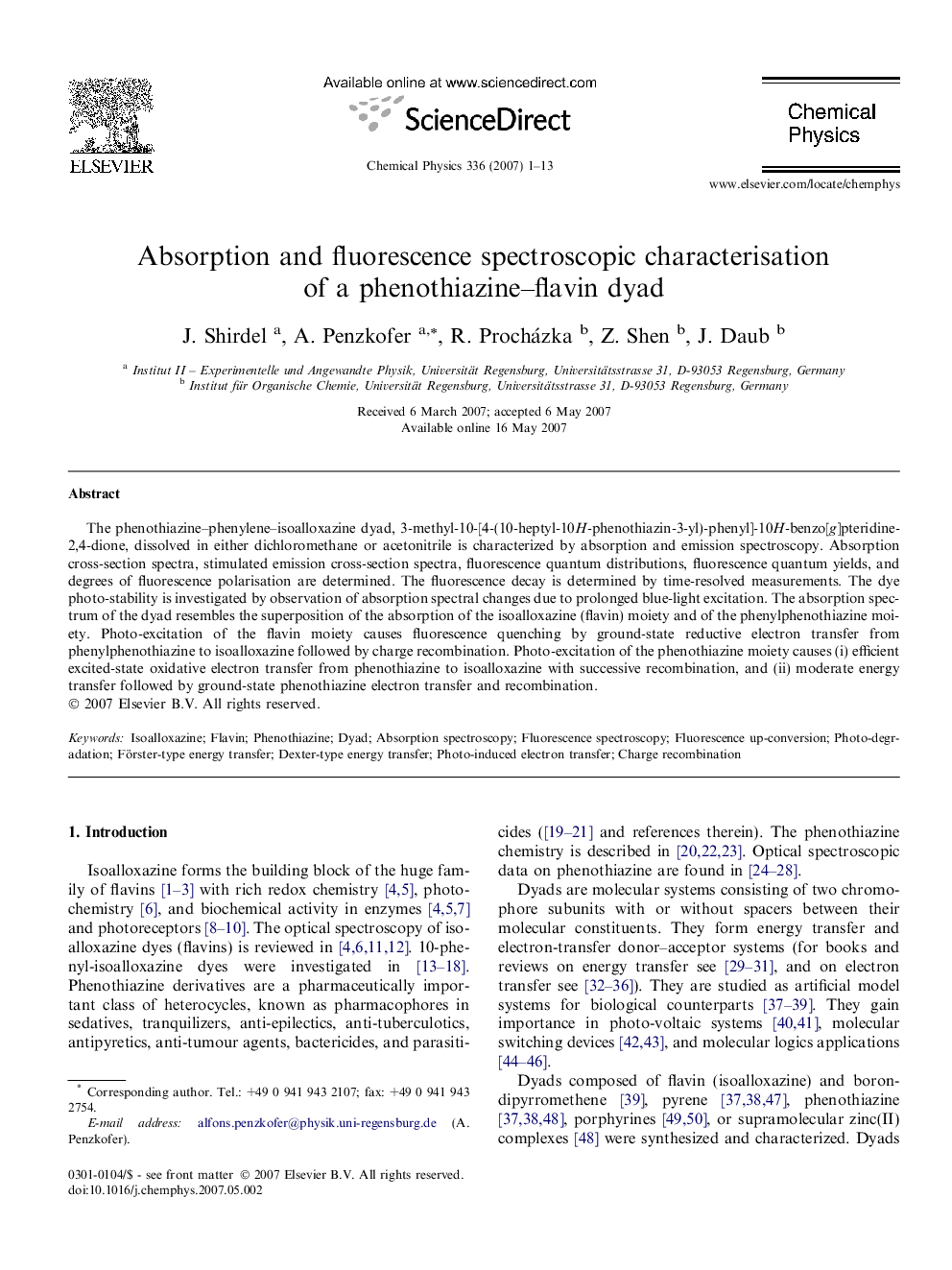| Article ID | Journal | Published Year | Pages | File Type |
|---|---|---|---|---|
| 5376299 | Chemical Physics | 2007 | 13 Pages |
Abstract
The phenothiazine-phenylene-isoalloxazine dyad, 3-methyl-10-[4-(10-heptyl-10H-phenothiazin-3-yl)-phenyl]-10H-benzo[g]pteridine-2,4-dione, dissolved in either dichloromethane or acetonitrile is characterized by absorption and emission spectroscopy. Absorption cross-section spectra, stimulated emission cross-section spectra, fluorescence quantum distributions, fluorescence quantum yields, and degrees of fluorescence polarisation are determined. The fluorescence decay is determined by time-resolved measurements. The dye photo-stability is investigated by observation of absorption spectral changes due to prolonged blue-light excitation. The absorption spectrum of the dyad resembles the superposition of the absorption of the isoalloxazine (flavin) moiety and of the phenylphenothiazine moiety. Photo-excitation of the flavin moiety causes fluorescence quenching by ground-state reductive electron transfer from phenylphenothiazine to isoalloxazine followed by charge recombination. Photo-excitation of the phenothiazine moiety causes (i) efficient excited-state oxidative electron transfer from phenothiazine to isoalloxazine with successive recombination, and (ii) moderate energy transfer followed by ground-state phenothiazine electron transfer and recombination.
Keywords
Related Topics
Physical Sciences and Engineering
Chemistry
Physical and Theoretical Chemistry
Authors
J. Shirdel, A. Penzkofer, R. Procházka, Z. Shen, J. Daub,
